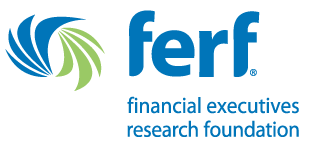Accounting
Public Company Audit Fees Increase by a Median 1.3 Percent
Public companies reported a median increase of 1.3 percent, compared with 1.6 percent in 2015. Private companies reported a median increase of 3.7 percent, compared with 2.9 percent for 2015 audits. Non-profit respondents reported a median increase ...
Jan. 16, 2018

Public companies reported a median increase of 1.3 percent, compared with 1.6 percent in 2015. Private companies reported a median increase of 3.7 percent, compared with 2.9 percent for 2015 audits. Non-profit respondents reported a median increase of 1.6 percent, compared with 2.3 percent in 2015.
That’s according to the annual Audit Fee Survey Report by the Financial Executives Research Foundation (FERF), an independent, non-profit research affiliate of Financial Executives International (FEI).
FERF’s 2017 Audit Fee Survey Report found that the rise in public company and non-profit audit fees is slowing, while private companies saw an uptick in their fee increases during the 2016 audit season.
Survey responses suggest companies were able to mitigate fee increases by improving internal controls, planning and preparation. These improvements allowed auditors to review transactions during the course of the year and the companies to negotiate rate increases that were fair to both parties given the work involved. Changing external auditors also helped mitigate fees.
Additional key findings include:
- Broader SEC data compiled by MyLogicIQ shows that median increases fell across all types of filers. Large accelerated filers had increases of 3.4 percent vs. 4.2 percent, accelerated filers had increases of 2.5 percent vs. 3.97 percent, and non-accelerated filers had increases of 2.4 percent versus 2.7 percent. Smaller filers had increases of 2.4 percent versus 2.7 percent.
- Overall, 2,120 registrants (33 percent) reported an increase in their audit fees, while 36 percent (2,296 registrants) reported an audit fee decrease.
- Accelerated filers saw lower fee increases than non-accelerated filers. Accelerated filers overall reported an increase of 0.2 percent; non-accelerated filers reported an increase of 3.0 percent.
- The range in hourly rates tightened. Survey respondents reported a median rate of $216 and an average rate of $225. This compares with $193 and $268 in last year’s findings.
“Organizations of all types continue to prepare for the implementation of new accounting standards and take advantage of opportunities to conduct strategic transactions. These factors continue to be primary drivers of audit fees,” said Andrej Suskavcevic, CAE, President and CEO of Financial Executives International and Financial Executives Research Foundation. “However, this year’s research shows that by implementing best practices internally and alongside auditors, fee increases can be mitigated. We look forward to working with our membership to help them continue to improve audit preparation and make the audit process as smooth and cost efficient as possible.”
Audit Fees and Key Drivers of Fees Vary
The audit fees paid by 161 public companies responding to the survey averaged $7.4 million, with a median of $2.8 million. The average percentage increase in audit fees reported was 6.9 percent, and the median increase was 1.3 percent. Acquisitions and new FASB revenue recognition standards dominated the reasons noted for audit fee increases, at 71 and 60 percent, respectively.
Increased M&A volume contributed to higher audit fees for nearly three-fourths of the 80 public companies that reported fee increases for their 2016 audits. Respondents say acquisitions led to higher fees both in terms of costs related to a transaction – valuation, due diligence and post-merger integration support – as well as higher ongoing costs associated with auditing a larger entity after the transaction closed.
Audit fees paid by the 281 privately held companies responding to the survey averaged $163,993, with a median of $70,000. The average percentage increase in audit fees among this group was 3.8 percent, and the median increase was 3.7 percent.
For private company respondents, inflation was the leading factor behind increased audit fees, with 48 percent of respondents citing that reason. This was followed by acquisitions at 28 percent. Unlike their public company counterparts, new FASB and revenue recognition standards were less of an influence on audit fees, although this is likely to change as private entities prepare for the 2019 adoption of the new revenue standard.
Fifty-six non-profit organizations responding to the survey reported average 2016 audit fees of $181,403. The median audit fee for non-profits was $52,388. The average percentage increase in audit fees reported was negative 2.3 percent, significantly lower than 6.2 percent the prior year. The median increase in audit fees for this group was 1.6 percent. Just over half (56 percent) of non-profit survey respondents cited inflation as the leading factor driving comparatively modest increases in audit fees.
Fee Mitigation Strategies
Forty-seven public companies, 40 private companies and 15 non-profit organizations cited lower audit fees in the 2016 survey. Among public companies, enhancing internal controls, increasing audit preparedness and reviewing audit focus areas were the most common tactics used to control costs. Among private companies, increasing audit preparedness, reviewing audit focus, enhancing internal controls and negotiating with auditors were cited as priorities used to mitigate audit fees.
FERF’s 2017 Audit Fee Survey Report examines total fees companies paid to external auditors on auditing and related services in 2016. The report is based on responses from 508 financial executives at public companies, private companies and non-profit organizations. In addition, the report also examines audit fees as reported by a larger sample of 6,394 SEC filers.
Audit fee information obtained from SEC filings has been provided by MyLogIQ. The survey was sponsored by Workiva. FERF’s 2017 Audit Fee Survey Report can be obtained by visiting the online FERF bookstore at www.ferf.org/reports.
